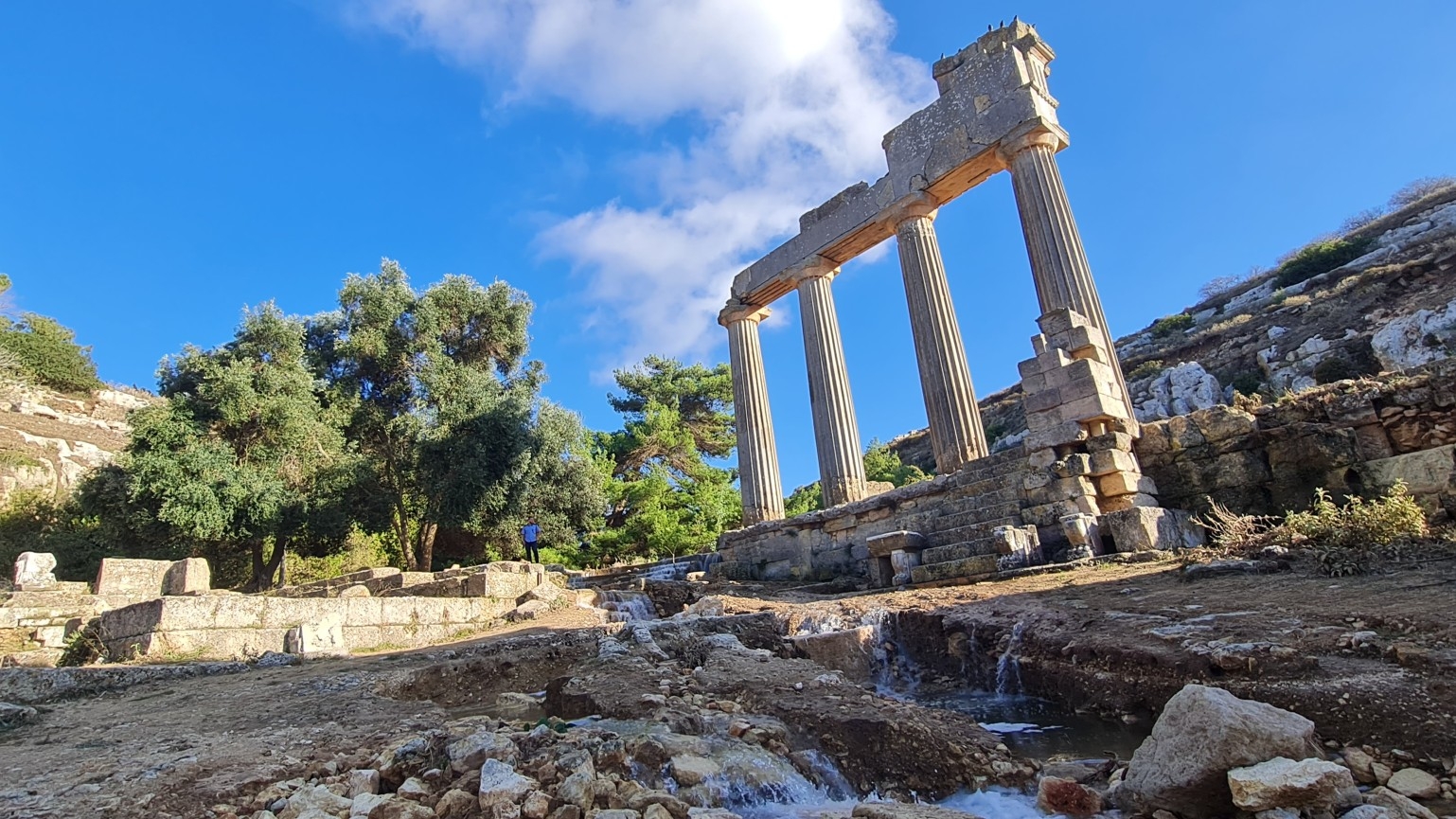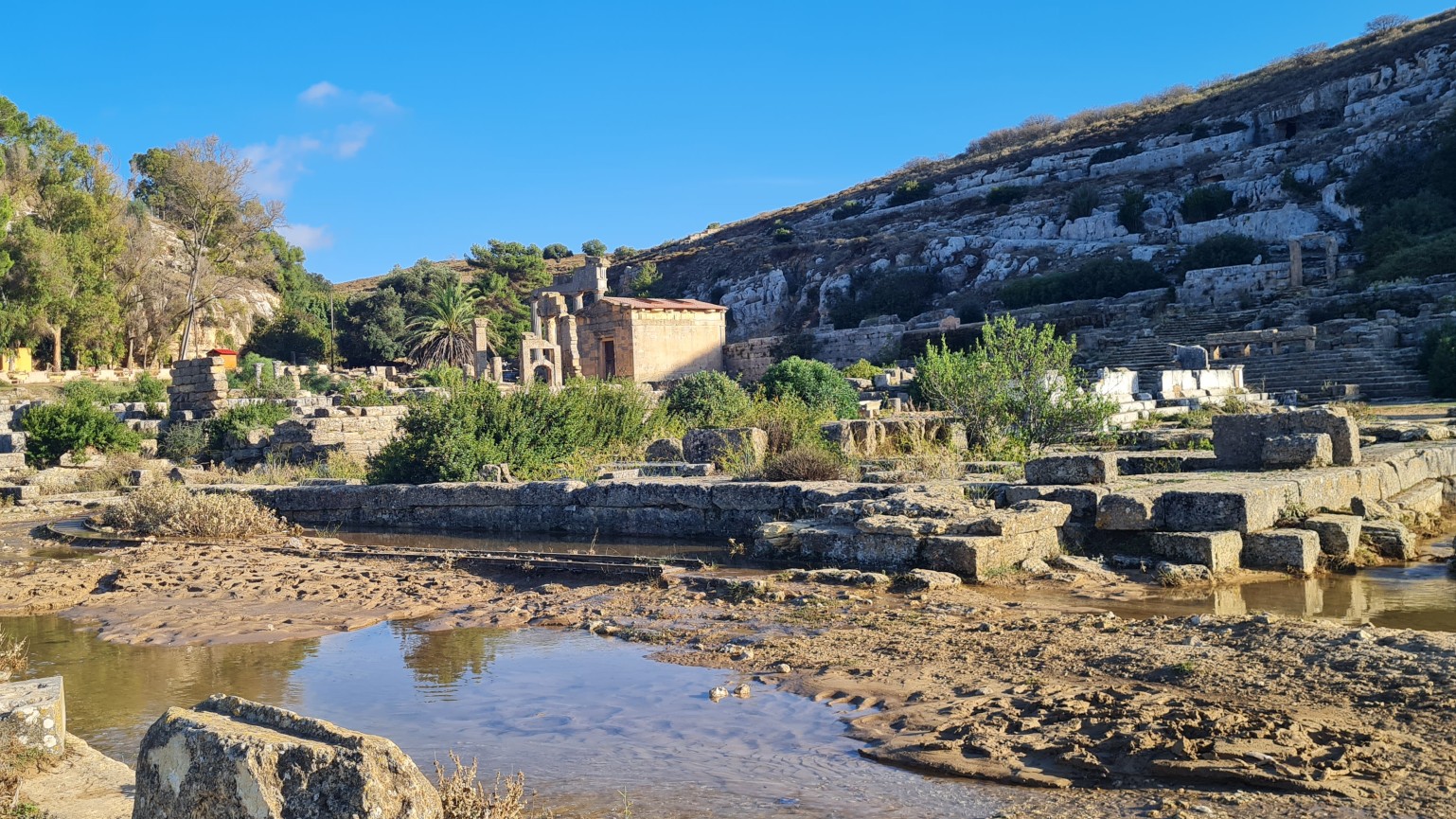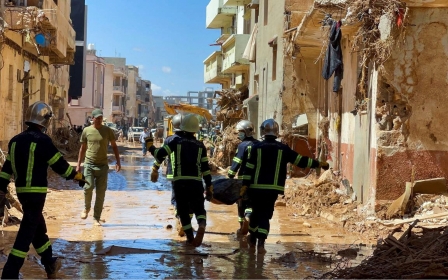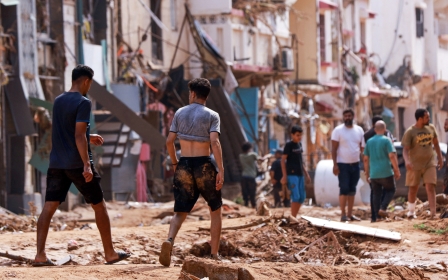Libya floods leave ancient Cyrene battered and at risk of plundering

In the 7th century BCE, Greek colonists landed on the shores of eastern Libya and began scaling the hilly region now known as the Green Mountain.
There they founded the city of Cyrene, a place that 2,600 years later still lends its name to Libya’s east: Cyrenaica.
Today, Cyrenaica is mourning. An estimated 20,000 people were killed on Sunday night when Storm Daniel tore through eastern Libya and caused flooding on a catastrophic scale.
In the city of Derna, 100km away from ancient Cyrene, flash floods wiped out a quarter of its neighbourhoods.
The human toll is beyond comprehension. But up on the slopes of the Green Mountain, damage has been inflicted, too, on a Unesco world heritage site that is an important part of Libya’s cultural history.
New MEE newsletter: Jerusalem Dispatch
Sign up to get the latest insights and analysis on Israel-Palestine, alongside Turkey Unpacked and other MEE newsletters
On Thursday, Middle East Eye found an archaeological site battered by floodwater and landslides.
Numerous tombs, funerary stones and other archaeological structures dating from the Greek, Roman, and Byzantine eras had been buried under mud or carried by water torrents down into the lower valleys of the Mansoura region.
While some tombs had been completely submerged by the waters, elsewhere the destructive forces had revealed new artefacts and structures in a brutal archaeological excavation of nature’s own.
In antiquity, Cyrene grew wealthy through the cultivation of silphium, a herb so popular it was consumed into extinction.
During the Greek period it housed a philosophy school founded by a disciple of Socrates, and in Roman times became known for its large Jewish community.
Now, it lies next to modern Shahat, one of the largest towns in the Green Mountain, a region pummelled for 17 hours by Storm Daniel’s torrential rain.
Anis Bou Ajayeb of the Shahat Antiquities Authority told MEE that he and his colleagues headed to the archaeological park soon after the storm passed to assess the damage, and had heard warnings from Mansoura residents.
The waters had revealed pieces of marble previously buried underground in the site’s southern part.
While floods had buried some tombs and other structures, they had exposed others.
“Members of the Antiquities Authority are surveying the damage, identifying the affected sites, and conducting examinations,” he told MEE.
“A final report on the damages will be issued in the coming days after visiting all the sites.”
Fears for other sites
Though work has begun on Cyrene, fears remain for ancient sites closer to the coast.
Cyrene’s port Apollonia, which is now part of the town of Susa, and Athrun are currently inaccessible to archaeological teams as the roads are impassable.
Anis Bou said preliminary information suggests significant damage has been sustained in those sites.
Athrun, whose name derives from the Greek word for red to reflect the rusty colour of the region’s soil, has the remains of an important Byzantine church that still has intricate decorate relief work.
When Islamic State group fighters held areas of eastern Libya from 2014 to 2016, it was also victim to vandalism.
Apollonia also has several important archaeological sites.
However, Susa was particularly badly hit by the flooding, with bodies reportedly washing up days after the disaster and destruction wrought across the town.
Bou Ajayeb said much of its antiquities are believed to have suffered extensive damage.
People in the area told MEE that some artefacts had been swept out into the sea.
Fathallah Khalefa, professor of archaeology at Omar al-Mukhtar University in the eastern Libyan city of al-Bayda, told MEE that sites such as Cyrene need to be secured and protected as soon as possible, to avoid anyone taking advantage of the situation.
Artefacts need to be catalogued and relocated to safe places, he said, particularly those with distinctive decorations or historical significance, as it is imperative to prevent their illegal sale on the black market.
If feasible, Khalefa said inspection of the affected areas and the documentation of soil layers based on their historical age should be conducted. A comprehensive field survey also needs to be carried out to search for newly uncovered artefacts.
Fathallah said it was vital that Libya’s cultural heritage and ancient monuments were preserved as they are an integral part of the country’s history and identity, though human life of course remains the priority.
“Focusing on their protection can contribute to documenting heritage and fostering intergenerational understanding,” Fathallah said.
“Cultural heritage can serve as a resource for recovery and reconstruction after disasters.”
This article is available in French on Middle East Eye French edition.
Middle East Eye delivers independent and unrivalled coverage and analysis of the Middle East, North Africa and beyond. To learn more about republishing this content and the associated fees, please fill out this form. More about MEE can be found here.






